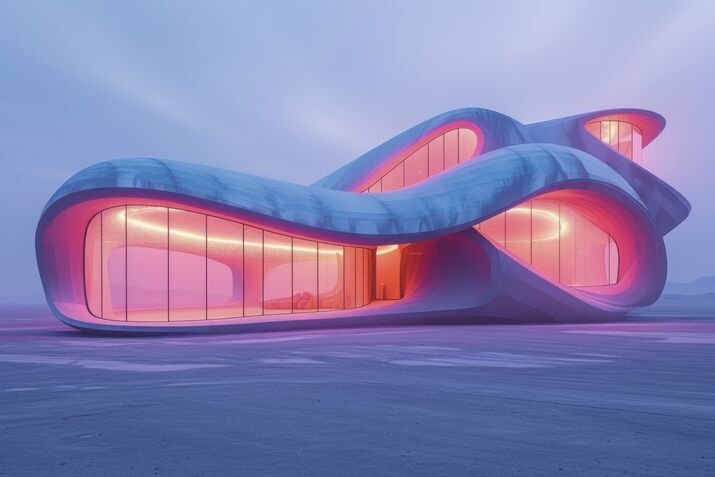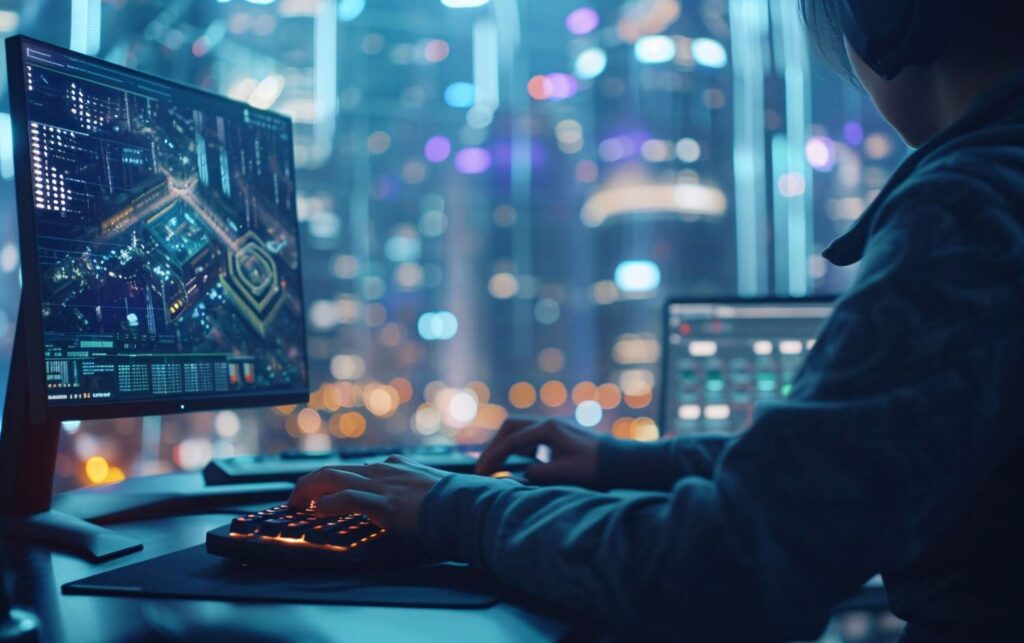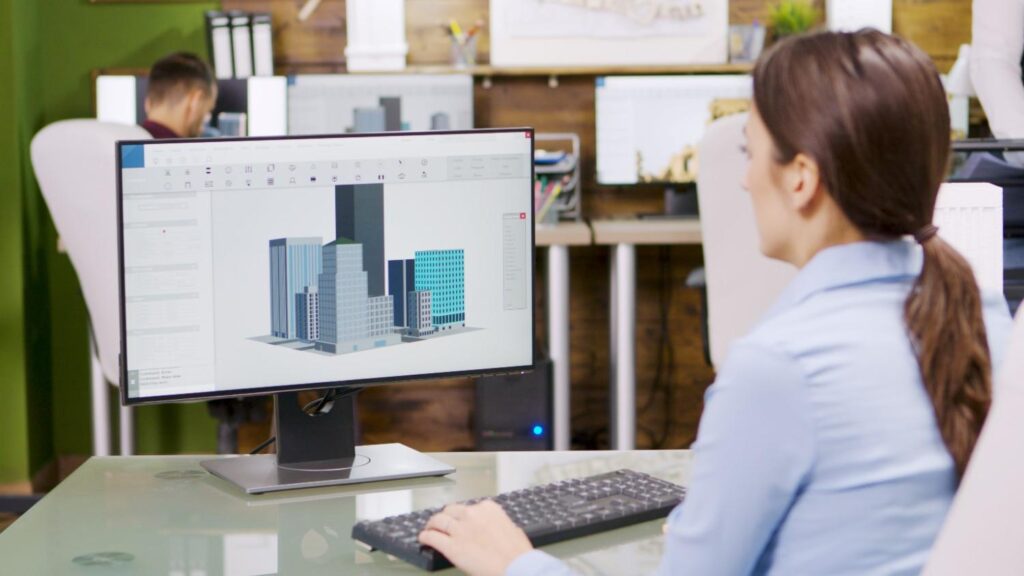OUTSOURCE CREATIVE SERVICES - OUTSOURCE CREATIVE WORKS-OUTSOURCING CREATIVE WORK - OUTSOURCE CREATIVE DESIGN -OUTSOURCE 2D ARTWORKS - 2D ART SERVICES - 2D ART OUTSOURCING -ART OUTSOURCING - OUTSOURCE ILLUSTRATION WORKS - OUTSOURCE ILLUSTRATION SERVICES - OUTSOURCE 3D MODELING - 3D MODEL OUTSOURCING- OUTSOURCING CAD WORKS- OUTSOURCE ARCHITECTURAL SERVICES -BIM - REVIT - 3D FLOOR PLAN - BIM OUTSOURCING SERVICES - MEP - REVIT MODELING - 3D FURNITURE MODELING - 3D ARCHITECTURE MODELING - AUGMENTED REALITY MODEL - VIRTUAL REALITY MODEL - 3D RENDERING - PRODUCT MODELING - 2D SERVICES - OUTSOURCE CREATIVE SERVICES -3D MODELING SERVICES - VFX
How AI is Revolutionizing Outsourced 3D Modeling
The world of 3D modeling, once the exclusive domain of highly specialized artists hunched over powerful workstations, is undergoing a seismic shift. This transformation is not being driven by a new software update but by a fundamental change in the creative process itself: Artificial Intelligence (AI). For the outsourcing industry, this technological leap is creating an entirely new value proposition, moving beyond simple labor arbitrage to a model defined by unprecedented speed, enormous scalability, and superior quality.

AI is not just a tool; it's a co-pilot, an accelerator, and a quality-assurance manager all rolled into one. It’s reshaping how clients procure 3D assets and how outsourcing studios operate, promising a future where the creation of vast, high-quality 3D content is faster and more cost-efficient than ever before. This article explores the profound impact of AI on outsourced 3D modeling, from the automation of tedious tasks to the rise of new, value-added services, and what it all means for businesses worldwide.
The demand for high-quality, realistic 3D content has never been higher. From e-commerce giants needing vast catalogs of product visuals for Augmented Reality (AR) to architects requiring detailed Building Information Models (BIM) and game studios building massive virtual worlds, 3D modeling is the bedrock of the digital economy. As this demand has exploded, outsourcing 3D modeling has become the primary mechanism for businesses to access world-class talent, manage costs, and scale production instantly.
The Traditional Bottleneck: Why AI Was Needed
In the traditional 3D modeling pipeline, time and cost were intrinsically linked to manual labor. Creating a single, high-fidelity 3D asset could take an experienced artist days or even weeks. This process involved numerous labor-intensive steps:
- Concept Iteration: Manual sketching and drafting of initial ideas.
- Modeling: Sculpting and building the mesh geometry from scratch.
- UV Unwrapping: The "necessary but tedious" process of flattening the 3D model's surfaces for texturing.
- Texturing: Manually creating, applying, and baking realistic surface details.
- Retopology: Simplifying the high-poly mesh for real-time applications like gaming or AR/VR.
This long, linear pipeline created a significant bottleneck, especially for industries with massive 3D asset needs, such as gaming, e-commerce, and architectural visualization (ArchViz). Outsourcing was primarily a way to achieve lower costs through cheaper labor, but it couldn't fundamentally change the time required to complete the task.
AI as an Accelerator: Transforming the Pipeline
Generative AI and machine learning have dismantled these bottlenecks by automating the most time-consuming and repetitive tasks. Outsourcing firms are now integrating AI-powered tools that dramatically cut down production cycles from weeks to mere hours or even minutes.
1. Generative Modeling and Asset Creation
The most visible change is the move from manual creation to AI-powered generation. New platforms are capable of producing usable 3D assets from minimal inputs.
- 2D-to-3D Conversion: AI-powered platforms like Kaedim and Alpha3D can analyze a single 2D image (or a series of product photos) and instantly generate a preliminary 3D mesh. This is a game-changer for e-commerce, where companies need to digitize thousands of products for online viewing and Augmented Reality (AR) experiences.
- Text-to-3D: Using natural language prompts, artists can guide an AI to generate an object. While the output may require human refinement, it serves as a robust starting point, replacing hours of initial modeling work.
- Generative Design: Especially in architecture and product design, AI can explore thousands of possible design options based on defined parameters (e.g., maximum stress, material limits, or aesthetic styles). This allows outsourced firms to deliver optimized, innovative solutions that a human team could not have conceived in the same timeframe.
2. Automation of Technical Grunt Work
AI’s role as an assistant is crucial for eliminating mundane technical tasks that slow down the traditional pipeline.
- Automated Texturing and Material Generation: AI tools can analyze reference images or base textures, extrapolate material patterns, and then automatically apply realistic surface details and colors to the 3D mesh. They can also automatically generate tileable textures and perform UV unwrapping, a process considered universally tedious by 3D artists.
- Retopology and LOD Generation: For game and AR/VR assets, a high-detail model must be converted into a lower-polygon version without losing visual integrity. AI can perform automatic retopology to create clean, optimized meshes and generate Levels of Detail (LODs), ensuring the asset is production-ready for real-time engines.
- Automated Rendering and Lighting: In architectural and product visualization, AI-driven rendering engines can intelligently evaluate a scene and automatically adjust lighting, shadows, and material properties to achieve lifelike visual effects. This saves countless hours of manual adjustment, making real-time rendering more accessible and efficient.
Key Benefits for Outsourcing Clients
The integration of AI fundamentally changes the economic and logistical advantages of using a 3D modeling outsourcing service.

1. Cost Efficiency and Massive Scale 💰
The automation of repetitive tasks translates directly into lower labor hours per asset, leading to significant cost reductions (up to 10-15x) compared to purely traditional pipelines. More importantly, AI introduces unparalleled scalability. Outsourcing firms can now handle peak demand for thousands of assets without needing to hire and manage massive teams of new modelers, allowing clients to quickly digitize entire product catalogs.
2. Unprecedented Speed and Iteration ⚡
The most profound benefit is speed. Concepts that once took weeks to progress through the pipeline can now yield a production-ready base model in a day. This acceleration shortens the feedback loop dramatically. Clients can request changes or explore entirely new aesthetic directions with a few text prompt tweaks, making the outsourcing process far more flexible. The ability to rapidly prototype new designs or game props gives clients a significant competitive edge in fast-moving markets.
3. Superior Quality and Consistency
AI-driven tools inherently offer a higher degree of precision and consistency than manual methods.
- Error Detection: AI can automatically scan a model for structural flaws, inconsistencies, and adherence to specific technical or coding standards (e.g., in BIM/CAD). This drastically reduces rework and costly errors later in the production cycle.
- Style Coherence: Once an AI model is fine-tuned to a client's specific aesthetic or game style, it can produce dozens of new assets that perfectly match that visual language, ensuring consistency across large, complex projects.
Industry-Specific Impact: Beyond the General
While AI is transforming the general 3D pipeline, its impact is particularly acute in certain high-demand sectors:
E-commerce and Retail 🛍️
For online businesses, AI-generated 3D models are a core driver of sales and customer experience.
- Boosting Conversion Rates: 3D models allow customers to rotate, zoom, and interact with products (often using AR "virtual try-ons"), which builds confidence. Studies show that 3D visualization can increase conversion rates by 20-40% and reduce product return rates by up to 30% because customers have a clearer, more accurate understanding of the product.
- Mass Digitization: AI allows e-commerce retailers to convert existing 2D product photos into AR-ready 3D models quickly and affordably, a process that was prohibitively expensive for large inventories using manual modeling.
Gaming and Entertainment 🎮
Game development is highly reliant on a massive and constant stream of unique assets, which AI is now facilitating.
- Rapid Environment Creation: AI can quickly generate a huge volume of environmental assets (rocks, foliage, debris, background props), allowing human artists to focus their attention on key characters and detailed hero assets.
- Concept to Asset in Days: AI-enhanced workflows allow concept artists to generate rapid iterations using text-to-image tools, which can then be fed into a 2D-to-3D AI model to get a usable base mesh almost instantly. This process transforms a weeks-long pipeline into a matter of days.
Architecture, Engineering, and Construction (AEC) 🏗️

In CAD and BIM outsourcing, AI elevates the service from a simple drafting function to a strategic consulting partnership.
- Intelligent Design Optimization: AI analyzes data to recommend designs optimized for energy efficiency, structural integrity, and occupant comfort. Outsourcing partners can use generative design to explore a wider spectrum of solutions faster.
- Automated Compliance and Quality Assurance: AI can automatically scan BIM models for code violations, design clashes, and inconsistencies, guaranteeing a higher standard of work and minimizing costly reworks on-site.
The Evolution of the 3D Artist and Outsourcing Firm
The rise of AI is not about replacing human talent; it’s about redefining it. The outsourcing industry is shifting from a labor arbitrage model to a value-added service model.
1. The Human-AI Partnership
The new, high-value 3D artist and modeler will become a creative curator and orchestrator of AI-generated outputs. Their new skills will include:
- Prompt Engineering: The ability to communicate effectively with the AI to generate the best possible starting models.
- Refinement and Finishing: Human oversight is still essential for ensuring the final model meets artistic direction, has clean topology, and possesses the subtle creative nuance that AI currently struggles to achieve.
- Creative Direction: Artists will focus on the high-level design, narrative, and unconventional problem-solving, leaving the "technical grunt work" to the AI.
2. The Outsourcing Firm of the Future
Leading outsourcing firms are integrating AI not as a cost-cutting measure for labor, but as an enhancement to their service delivery. The new competitive advantage lies in the seamless integration of these tools into their workflow.
- Proprietary and Fine-Tuned Models: Studios will develop or license AI models fine-tuned to specific clients' styles or technical requirements, offering custom, high-quality consistency at scale.
- Platform Integration: Tools like Virtuall or Kaedim are becoming essential 3D AI co-pilots, not only for model generation but also for project management, version control, and team collaboration across remote teams.
Challenges and Considerations in the AI Era
While the advantages are clear, the transition to an AI-driven outsourcing model presents new challenges that require careful navigation.
| Challenge | Description | Impact on Outsourcing |
| Data Quality and Training | The output quality of generative AI is dependent on the data it was trained on. | Outsourcing firms must ensure their AI models are trained on ethically sourced and high-quality, proprietary data to maintain a competitive edge and avoid legal/IP issues. |
| Intellectual Property (IP) Concerns | Questions about who owns the copyright for an asset generated or heavily assisted by an AI tool. | Clear contracts and agreements are needed to delineate IP ownership of AI-generated work, especially when the AI is trained on client-specific data. |
| New Skill Gap | The shift from technical modeling to creative curation requires new skills like prompt engineering. | Outsourcing firms must invest heavily in training their existing artists to master AI workflows, or risk falling behind. |
| Maintaining Human Touch | Over-reliance on AI can lead to a loss of subtle, high-level artistic quality or "soul" in the assets. | Human modelers must remain in the loop for final refinement, quality control, and the creation of hero assets that require bespoke attention. |
The Future is a Human-AI Synergy
The revolution in outsourced 3D modeling is irreversible. AI is transforming the industry from one focused on manual hours to one centered on intelligent outcomes.
The future of 3D modeling outsourcing is not a world without human artists, but a world where human creativity is infinitely amplified. By automating the mechanical, repetitive tasks, AI frees up human expertise to focus on strategic innovation, high-level creative direction, and the complex finishing touches that truly elevate a model from a generic asset to a masterpiece.
Businesses that choose to partner with AI-enabled 3D modeling outsourcing firms today are not just saving money; they are future-proofing their content strategy, gaining a decisive edge in speed and scale, and stepping into the next era of digital creation. The synergy between human artistry and artificial intelligence is poised to unlock boundless potential, making the impossible scale of content creation a reality.
Visit
Fore more details contact us : https://www.outsource3dmodeling.com/

No comments:
Post a Comment